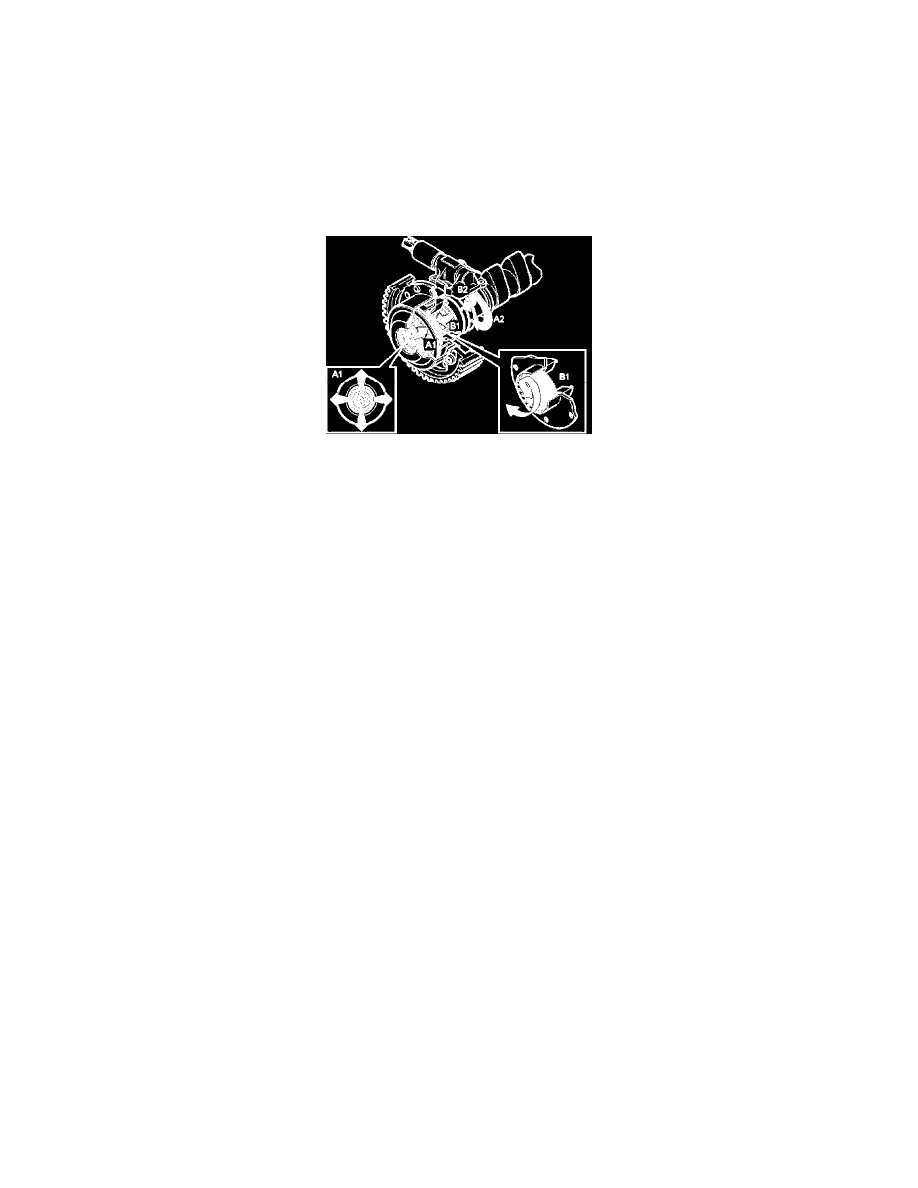S60 AWD L5-2.5L Turbo VIN 59 B5254T2 (2005)

Example:
If camshaft flank 1 is detected at 10 degrees from the crankshaft reference position for flank 1 (0 degrees +10 degrees), the cam timing is 10 degrees. If
the cam timing is the same (10 degrees), flank 2 is detected at 216 degrees (206 degrees + 10 degrees), flank 3 at 396 degrees (386 degrees + 10
degrees), and flank 4 at 586 degrees (576 degrees + 10 degrees). The cam timing can be positive (+) or negative (-) depending on whether the flank is
detected before or after the different reference positions for the crankshaft.
The engine control module (ECM) controls the camshaft reset valve smoothly in order to regulate the camshaft cam timing. The valve controls the flow
of engine oil to the continuous variable valve timing (CVVT) unit which is affected by the oil pressure that builds up. Also see Design.
Control
Control takes place as follows when deploying the camshaft:
1. Oil is forced from the engine lubricating system to the intake port on the reset valve
2. The engine control module (ECM) grounds the valve, the position of the piston in the valve changes and the oil is guided to the continuous
variable valve timing (CVVT) unit chamber (A1) via the duct (A2) in the camshaft
3. The continuous variable valve timing (CVVT) unit hub is pressed backwards by the oil pressure. The continuous variable valve timing (CVVT)
unit then rotates the hub and the carriers are joined by twisted splines
4. The oil flows to the engine oil pan via the outer ducts on the hub and the reset valve's return hose.
Control takes place as follows when returning the camshaft:
1. Oil is forced from the engine lubricating system to the intake port on the reset valve
2. The engine control module (ECM) breaks the ground connection for the valve. The piston in the valve is then pressed back by a spring. The oil
flows to the continuous variable valve timing (CVVT) unit chamber (B1) via a duct (B2) in the camshaft
3. The hub of the continuous variable valve timing (CVVT) unit is forced forward by the oil pressure that is created. The continuous variable valve
timing (CVVT) unit will rotate back to the nondeployed position
4. The oil flows to the engine oil pan via the center duct on the hub and the reset valve's return duct.
The above takes place very quickly. The engine control module (ECM) controls the deployment and return of the reset valve continually at high
frequency. This results in rapid and exact control.
The extent of camshaft control (the change of cam timing) varies depending on the engine variant and the model year.
